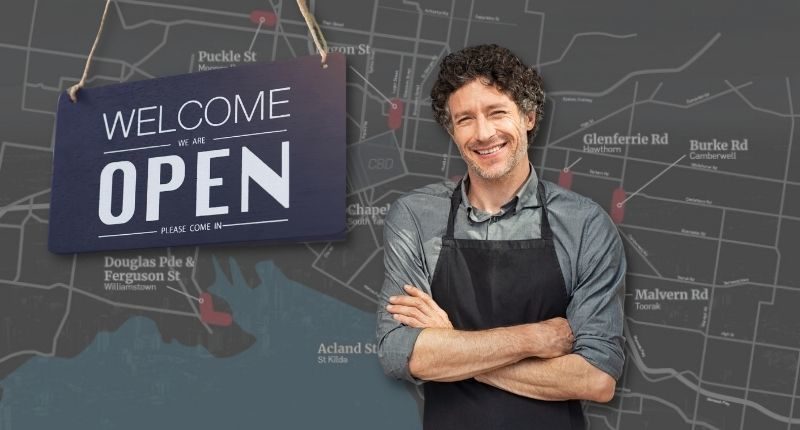- The shopping strips of Melbourne have bounced back
- Food and beverage outlets have been trading the best
- Rental collections are returning to pre-COVID levels
The humble shopping strip is not going away. We Aussies like our local shopping strips, and the pandemic seems to have reminded us of their strength and pulling power.
With less options such as overseas travel to take our spending dollar, the suburban shopping centre has attracted residents, families and all sorts to eat out like never before.
With more people working from home, either forcibly or voluntarily two or three days a week, the shopping strip has seen an upswing in popularity, perhaps to the detriment of the inner city retail and hospitality sector.
“In white-collar neighbourhoods, restaurants are exceptionally busy,” Cameron Hopkins, Director at Burgess Rawson, told The Property Tribune.
“What has happened, is the transfer of some part of the working week to home, and where those homes are, especially in high-end areas, people are eating out more.
“They’ve bought their stuff for their house, they can’t go on overseas holidays, and they still have plenty of discretionary spend left over, so they’re eating out,” he said.
A new report(1) from Melbourne commercial agency Fitzroys seems to bear this out.
“The COVID period reinforced the role of the iconic neighbourhood strips as a place for Melburnians to connect with their local communities while the city endured multiple lockdown periods,” Fitzroys Director, David Bourke said.
Among the findings of the report were:
- Vacancies increased on average by 2.6% across nearly 35 of Melbourne’s major
shopping strips (from 7.7% heading into COVID to 10.3% currently), with a broad
variation of performances - Food and beverage was by far the best-performing sector
- Landlords have become more willing to meet the market on lease terms
- Click and collect and take away delivery grew during the COVID lockdown
- Supermarket-anchored strips were solid
- Exiting tenants looking to upgrade their position
- As we move into Q3 2021, rental collections are returning to pre-COVID levels and
confidence is evident with many retail occupants extending their lease tenure with
exercise of options
Map of Melbourne Shopping Strips

“Melburnians love their local villages. They have reinforced their position as the heartbeat of their local communities over the past 12 months,” Mr Bourke said.
Some might say that the local shopping strip had entered a new chapter.
“A lead-in of six to 12 months before COVID of informing property owners about changes in the market laid the groundwork for changing expectations. Well-informed landlords could quickly adjust to new market norms, and secure lease renewals and new retailers seeking a presence in these resilient strip shopping centres,” said James Lockwood, Fitzroys Associate Director of Leasing.
“Landlords mostly embraced the upside of meeting the market and offering incentives and flexible terms as a means of enticing tenants, whether they be shorter periods with options, greater rent-free periods, or a ‘COVID Clause’ that has quickly become an expected component of any lease.”
Food and beverage upswing
The food and beverage sector increased its presence across the strips, growing in 64% of the precincts, by far the best performing sector.
“Hospitality operators have dominated retail leasing enquiry throughout Melbourne’s
shopping strips since the outbreak of COVID.
“Properties with kitchen infrastructure already in place remain in huge demand. These are still leasing quickly as tenants don’t have to plan and put a new kitchen fit-out in place themselves, saving them time and money, and making funding more straightforward in a climate in which businesses need to be leaner and faster,” said Mr Lockwood.
For example, Glenferrie Road, Hawthorn was a particular beneficiary of this trend, seeing a Melbourne-high 7.9% increase in food and beverage operators over the past year.
Melbourne Shopping Strip, Vacancy Rates, 2019-2021

~~
Source: (1) ‘Walk the Strip’, Melbourne’s Prime Metro Retail Strips Volume 4 Report, 28 July 2021.








